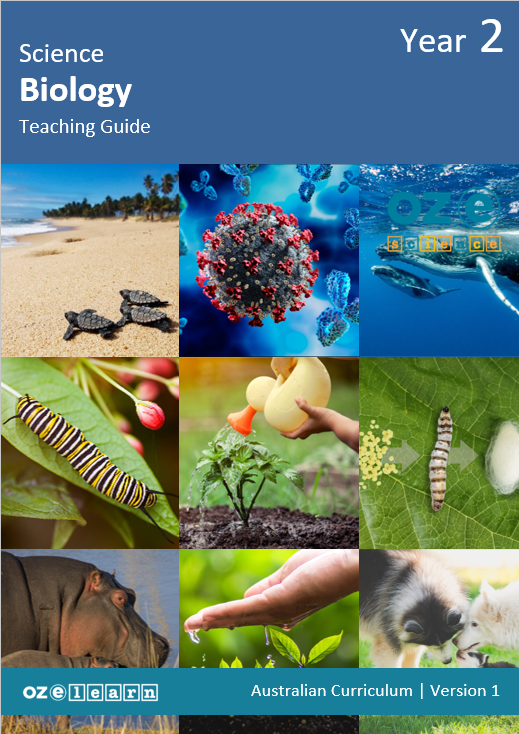Oz-e-science

Teaching resources
Extra Resources
In Lessons 1 to 9, students learn about:
- building a small pond ecosystem and identifying what an ecosystem provides living things with so they can live, grow and change
- identifying that animal, including humans, have offspring that look similar to their parents and things that have stayed the same and things that have changes as animals, including humans, grow
- micro-organisms and the microscopic living things in pond water
- how sea monkeys grow and change and sequencing the life stages of animals as they grow and change
- meta-morphosis and sequencing the life stages of insects and amphibians and compare the different stages as they grow and change
- features of plants as they grow and change and comparing these features
- what plants need to grow and change and how the features of plants help them grow and change
- a chosen animal, insect, or amphibian studied, its life stages, and describe how it has changed
- creating a labelled model showing the different stages of a chosen animal
- completing a final assessment, reporting and communicating.
Progress Tests
Progress tests are conducted after every second lesson, allowing teachers to monitor student understanding of the concepts taught over the past two lessons and to identify where reteaching is needed. The Teaching Guide contains the testing questions, and the Student Workbook has a section where students write their answers and score themselves.
Structured Research Activity
The Structured Research Activity (SRA) for this unit is as follows: Students create and present model showing the different life stages of their chosen animal. The SRA takes place over two lessons so students can apply the Science Understanding and Science Inquiry Skills covered in the unit. Teachers use the Guide to Making Judgements, which is included in the Teaching Guide, to mark the SRA.
End-of-Unit Assessment
The last lesson is the end-of-unit assessment, which has a variety of question formats (e.g. label the diagram, circle the correct answer) to assess student mastery of content from the unit. The end-of-unit assessment is in the Teaching Guide. Teachers copy the assessment and distribute to students at testing time.
Progress tests are conducted after every second lesson, allowing teachers to monitor student understanding of the concepts taught over the past two lessons and to identify where reteaching is needed. The Teaching Guide contains the testing questions, and the Student Workbook has a section where students write their answers and score themselves.
Structured Research Activity
The Structured Research Activity (SRA) for this unit is as follows: Students create and present model showing the different life stages of their chosen animal. The SRA takes place over two lessons so students can apply the Science Understanding and Science Inquiry Skills covered in the unit. Teachers use the Guide to Making Judgements, which is included in the Teaching Guide, to mark the SRA.
End-of-Unit Assessment
The last lesson is the end-of-unit assessment, which has a variety of question formats (e.g. label the diagram, circle the correct answer) to assess student mastery of content from the unit. The end-of-unit assessment is in the Teaching Guide. Teachers copy the assessment and distribute to students at testing time.

